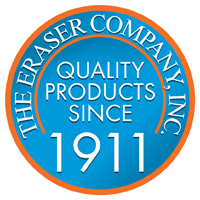Stripping Techniques
Fiberglass and Wire Wheels:
Fybrglass or wire brush wheels may be utilized to strip wires. Fybrglass wheels rotate at high speed and generate frictional heat that softens the insulation on the wire and the “nap” of the wheel wipes it away. A clean polished surface is produced with no risk of nicking. Wire brushes remove insulation by the cutting action of their many bristles. These are more abrasive than Fybrglass wheels and are recommended for larger wires where a roughened surface aids subsequent soldering. Wire brush wheels will also remove glass and fabric insulations. The selection of the correct grade of stripping wheel is critical.
Dip Strip is used to chemically remove the insulation from virtually all magnet and enamel wires of all sizes and insulation types, without damage to the wire. When heated in the specially designed stripping pot, the Dip Strip melts and wires are immersed in the Dip Strip to strip the insulation. The stripped wires are then rinsed in water and Dip Clean Metal Cleaner to remove oxides and residue. Dip Strip does not corrode conductors as will acid strippers.
Blades:
High-speed rotating blades strip insulation from the surface of the wire. They will remove film insulations including enamel, Formvar, ML, armored poly-thermaleze, epoxy and more from round wires. They can also be used for other applications such as: deflashing wires, cleaning legs of electronic components, cleaning pins on transformers and coils, and also remove oxidation, and even contaminated solder.
Thermal:
Thermal strippers use heated blades to melt through thin walled insulations such as Teflon, instead of cutting it, which lessens the chance of nicking the conductor. The material will need to be rotated to score the jacket completely around the conductor, or notched elements can be purchased to accomplish the same result.

